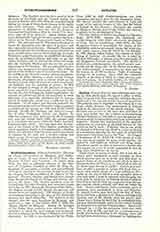

Stylites (PILLAR SAINTS) were solitaries who, taking up their abode upon the top of a pillar (Greek: stulos), chose to spend their days amid the restraints thus entailed and in the exercise of other forms of asceticism. This practice may be regarded as the climax of a tendency which became very pronounced in Eastern lands in the latter part of the fourth century. The duration and severity of the fasts then practiced almost pass belief, but the evidence is overwhelming (Butler; Palladius, I, 188, 240-1), and the general correctness of the accounts preserved to us is now hardly disputed. Besides the mortification of the appetite, submission to restraints of all kinds became at this period an end in itself. Palladius tells us (ch. xlviii) of a hermit in Palestine who dwelt in a cave on the top of a mountain and who for the space of twenty-five years never turned his face to the West. St. Gregory of Nazianzus (P.G., XXXVII, 1456) speaks of a solitary who stood upright for many years together, absorbed in contemplation, without ever lying down. Theodoret assures us that he had seen a hermit who had passed ten years in a tub suspended in mid air from poles (Philotheus, ch. xxviii).
There seems no reason to doubt that it was the ascetical spirit manifested in such examples as these which spurred men on to devise new and more ingenious forms of self-crucifixion and which in 423 led Simeon Stylites the Elder (q.v.) first of all to take up his abode upon the top of a pillar. Critics, it is true, have recalled a passage in Lucian (De Syria Dea, cc. xxviii-xxix) which speaks of a high column at Hierapolis to the top of which a man ascended twice a year and spent a week in converse with the gods, but even such an authority as Nöldeke thinks it unlikely that Simeon had derived any suggestion from this pagan custom, which certainly had died out before his time. In any case Simeon had a continuous series of imitators, more particularly in Syria and Palestine. St. Daniel Stylites may have been the first of these, for he had been a disciple of St. Simeon and began his rigorous way of life shortly after his master died. Daniel was a Syrian by birth but he established himself near Constantinople, where he was visited by both the Emperor Leo and the Emperor Zeno. Simeon Stylites the Younger (q.v.), like his namesake, lived near Antioch; he died in 596, and had for a contemporary a hardly less famous Stylites in St. Alypius, whose pillar had been erected near Adrianople in Paphlagonia. Saint Alypius after standing upright for fifty-three years found his feet no longer able to support him, but instead of descending from his pillar lay down on his side and spent the remaining fourteen years of his life in that position.
St. Luke the Younger, another famous pillar hermit, whose life has recently been printed for the first time in the “Analecta bollandiana” (1909, pp. 5-56), lived in the tenth century on Mount Olympus, but he also seems to have been of Asiatic parentage. There were many others besides these who were not so famous and even women Stylites were also known. One or two isolated attempts seem to have been made to introduce this form of asceticism into the West but it met with little favor. In the East cases were found down to the twelfth century; in the Orthodox Russian Church it lasted until 1461, and among the Ruthenians even later. There can be no doubt that for the majority of the pillar hermits the extreme austerity of which we read in the lives of the Simeons and of Alypius was somewhat mitigated. Upon the summit of some of the columns for example a tiny hut was erected as a shelter against sun and rain, and we hear of other hermits of the same class among the Monophysites, who lived inside a hollow pillar rather than upon it; but the life in any case must have been one of extraordinary endurance and privation. Probably the best justification of these excesses of austerity is to be found in the fact that, like the great renunciation of St. Melania the Younger (see Cardinal Rampolla’s “Sta Melania Giuniore”), they did, in an age of terrible corruption and social decadence, impress the need of penance more than anything else could have done upon the minds and imagination of Oriental Christians.
HERBERT THURSTON

